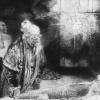Stonehenge
-
Теми
-
Руско-украинската война 2022-2024 година. 1 2 3 4 44
От Р. Теодосиев, in Руско-украинската война 2022 година.
- 1075 мнения
- 42519 views
-
- 5 мнения
- 83 views
-
- 2266 мнения
- 105961 views
-
- 3409 мнения
- 135758 views
-
- 68 мнения
- 2870 views
-
-
Последно разглеждащи 0 Потребители
- No registered users viewing this page.



Recommended Posts
Напиши мнение
Може да публикувате сега и да се регистрирате по-късно. Ако вече имате акаунт, влезте от ТУК , за да публикувате.